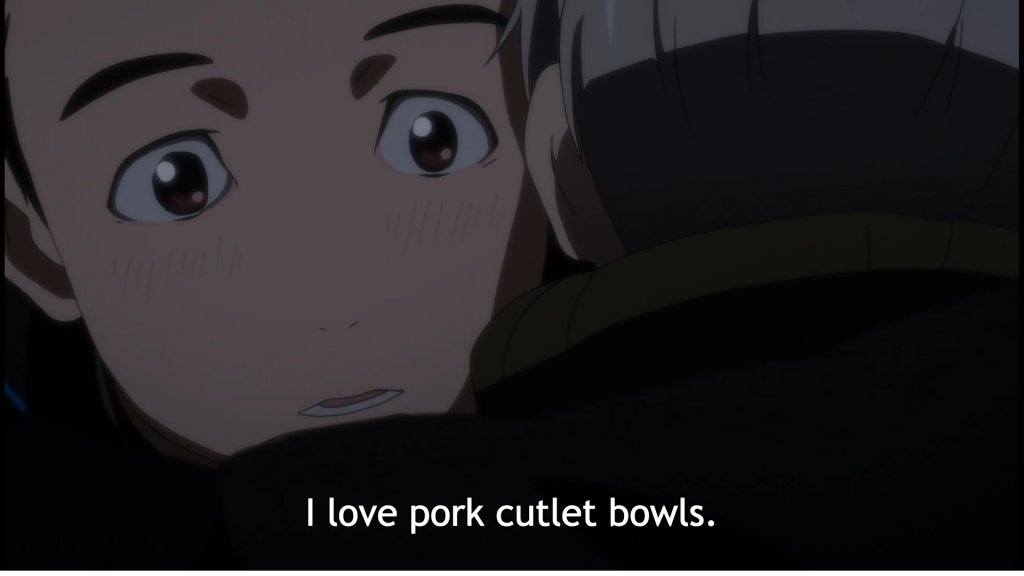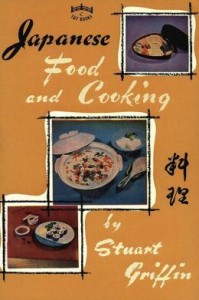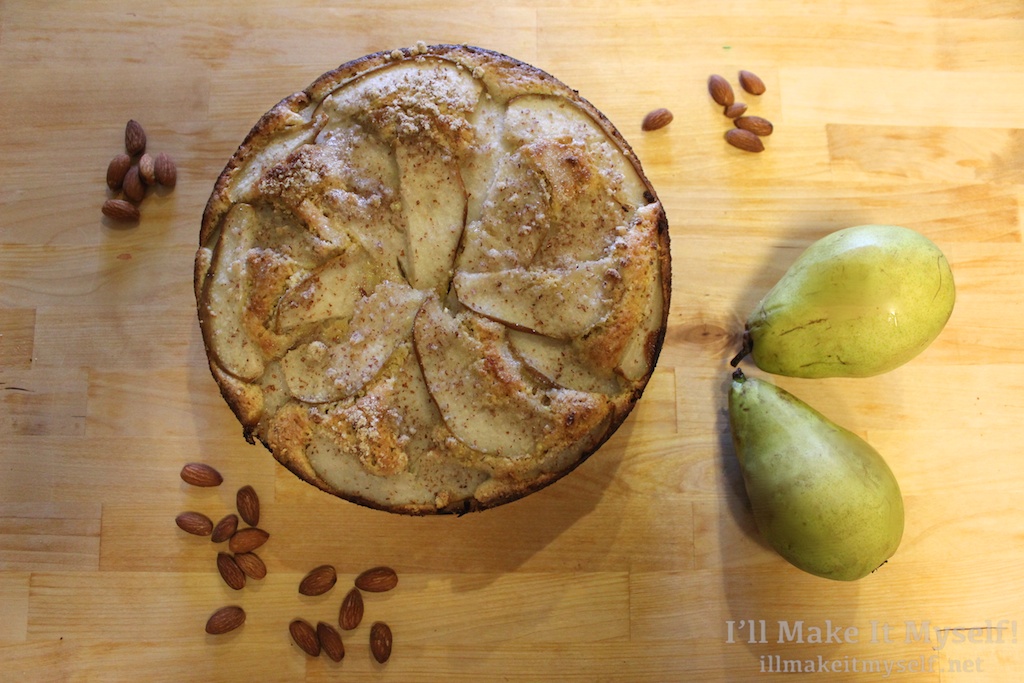I’ll Make It Myself!: Katsudon Fatale for Two
LM (CIR Ishikawa-ken, Anamizu, 2009-11) is the editor of The Ishikawa JET Kitchen: Cooking in Japan Without a Fight. Ze works in international student exchange; writes I’ll Make It Myself!, a blog about food culture in Japan and the US; curates The Rice Cooker Chronicles, a series of essays by JETs and JET alumni on the theme of cooking/eating and being alone in Japan; and admins The JET Alumni Culinary Group on LinkedIn.
Channel your inner katsudon fatale with this recipe, plus a review of hit anime Yuri!!! on Ice.
I’ll Make It Myself!: Black Sesame and Pear Muffins
LM (CIR Ishikawa-ken, Anamizu, 2009-11) is the editor of The Ishikawa JET Kitchen: Cooking in Japan Without a Fight. Ze works in international student exchange; writes I’ll Make It Myself!, a blog about food culture in Japan and the US; curates The Rice Cooker Chronicles, a series of essays by JETs and JET alumni on the theme of cooking/eating and being alone in Japan; and admins The JET Alumni Culinary Group on LinkedIn.
Have I told you, dear readers, how much I love Lottie and Doof‘s “Black Sesame and Pear Cake”? When I could get Western pears, I loved making that cake in Japan, where black sesame is a common ice cream and wagashi flavor. I wanted to adapt the flavors of this cake into something smaller, less sweet, and more portable for weekday breakfasts, hence the muffins.
I’ll Make It Myself!: Afternoon Tea x Glico’s “Sweet Love Story”
L.M. (CIR Ishikawa-ken, Anamizu, 2009-11) is the editor of The Ishikawa JET Kitchen: Cooking in Japan Without a Fight. Ze works in international student exchange; writes I’ll Make It Myself!, a blog about food culture in Japan and the US; curates The Rice Cooker Chronicles, a series of essays by JETs and JET alumni on the theme of cooking/eating and being alone in Japan; and admins The JET Alumni Culinary Group on LinkedIn.
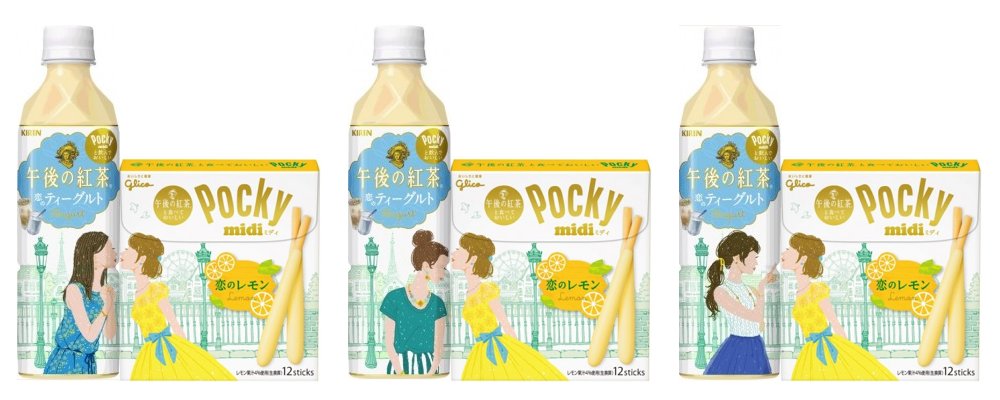
Via @eerrkkyy. Images of Aya, the Pocky character, in a yellow dress and her lips puckered up, lined up with the women characters from the Afternoon Tea bottles, thus appearing to kiss them.
On Feb. 16, 2016, Kirin’s Afternoon Tea brand and Glico’s candy Pocky released their second design/pairing collaboration with Pocky’s “Lemon Love” (恋のレモン) and Afternoon Tea’s “Teagurt” (yogurt + tea) (ティーグルト). Eaten together, the candy and the tea are supposed to taste like rare cheesecake (レアチーズケーキ) a Japanese style of cheesecake that isn’t baked but is stabilized by the addition of gelatin. The package design is also a collaboration: the Pocky boxes feature a woman (Aya) in a yellow dress on one set and a man (Tsubasa) in a yellow vest on the other. Aya and Tsubasa are positioned on the left side of their respective Pocky boxes so you can pair them with the 6 different characters featured on the right side on the drink bottle. There are three men and three women characters on the drink bottles, with one woman character and one man character on opposite sides of the same bottle, so you can turn the bottle to have the character of your choice to face the character on your Pocky box.
At first glance, it looks like Glico and Kirin have created something inclusive, and it’s really, really adorable.
At least until you start reading the copy.
I’ll Make It Myself!: Crying a Thousand Beautiful Tears into my Tofu
L.M. (CIR Ishikawa-ken, Anamizu, 2009-11) is the editor of The Ishikawa JET Kitchen: Cooking in Japan Without a Fight. Ze works in international student exchange; writes I’ll Make It Myself!, a blog about food culture in Japan and the US; curates The Rice Cooker Chronicles, a series of essays by JETs and JET alumni on the theme of cooking/eating and being alone in Japan; and admins The JET Alumni Culinary Group on LinkedIn.
On my business trip, I had an overnight in Kyoto, and my coworker and I stopped to get lunch at Kyoto Station before going to our hotel. While I’m partial to the “solid tofu” (katatôfu [堅豆腐]) of the Kaga region, I also love Kyoto’s yuba (ゆば, 湯葉), the “tofu skin” and didn’t want to leave the city without eating some. We stopped at Kyotofu Fujino (京豆富「不二乃)」, the Kyoto JR Station’s location of Kyotofu Fujino (note the different kanji: 京とうふ藤野) and ordered a set lunch.
And then proceeded to weep into our tofu.
I’ll Make It Myself: Halloween in Japan (2015): Krispy Kreme’s “Mad for Monsters” Campaign
L.M. (CIR Ishikawa-ken, Anamizu, 2009-11) is the editor of The Ishikawa JET Kitchen: Cooking in Japan Without a Fight. Ze works in international student exchange; writes I’ll Make It Myself!, a blog about food culture in Japan and the US; curates The Rice Cooker Chronicles, a series of essays by JETs and JET alumni on the theme of cooking/eating and being alone in Japan; and admins The JET Alumni Culinary Group on LinkedIn.
Krispy Kreme’s “Mad for Monsters” campaign features four types of doughnuts: Spider Chocolate Custard (スパイダーチョコカスタード), a custard-filled doughnut with a spiderweb design in chocolate icing; Caramel Halloween Jack (キャラメルハロウィーンジャック), a caramel-custard-filled doughnut with a jack-o-lantern design; Maple Milk Franken (メプルミルクフランケン), a square doughnut with a Frankenstein’s monster design and filled with maple custard; and Purple Potato Monster (ムラサキイモモンスター), a yeast ring with purple-sweet-potato icing and three cereal “eyes.”
I’ll Make It Myself!: Halloween Food in Japan (2015): Mister Donut Pon de Shu
L.M. (CIR Ishikawa-ken, Anamizu, 2009-11) is the editor of The Ishikawa JET Kitchen: Cooking in Japan Without a Fight. Ze works in international student exchange; writes I’ll Make It Myself!, a blog about food culture in Japan and the US; curates The Rice Cooker Chronicles, a series of essays by JETs and JET alumni on the theme of cooking/eating and being alone in Japan; and admins The JET Alumni Culinary Group on LinkedIn.
Documenting Halloween in Japan used to be sort of a game to see which companies were marketing the holiday as a seasonal event amidst globalization and marketing gimmicks…. I wanted all the cool doughnuts from the website/ad, but all Ikebukuro had was the jack-o-lantern shaped ones. I also got a kinako raised ring (yeast doughnut) and a chocolate Pon de Ring.
Click HERE to read MORE.
I’ll Make It Myself!: Halloween Food in Japan 2015: Family Mart
L.M. (CIR Ishikawa-ken, Anamizu, 2009-11) is the editor of The Ishikawa JET Kitchen: Cooking in Japan Without a Fight. Ze works in international student exchange; writes I’ll Make It Myself!, a blog about food culture in Japan and the US; curates The Rice Cooker Chronicles, a series of essays by JETs and JET alumni on the theme of cooking/eating and being alone in Japan; and admins The JET Alumni Culinary Group on LinkedIn.
What a perfect time to come to Japan and do some food anthropology! It’s been 10 years since I first came to Japan, and now I’m back for a quick visit, just in time for documenting Halloween. How far we’ve come in ten years from just Baskin Robbins’ Halloween flavors.
I’ll Make It Myself!: Pixelated 1-Up Cake (Mario Bros.)
L.M. Zoller (CIR Ishikawa-ken, Anamizu, 2009-11) is the editor of The Ishikawa JET Kitchen: Cooking in Japan Without a Fight. Ze works in international student exchange; writes I’ll Make It Myself!, a blog about food culture in Japan and the US; curates The Rice Cooker Chronicles, a series of essays by JETs and JET alumni on the theme of cooking/eating and being alone in Japan; and admins The JET Alumni Culinary Group on LinkedIn.
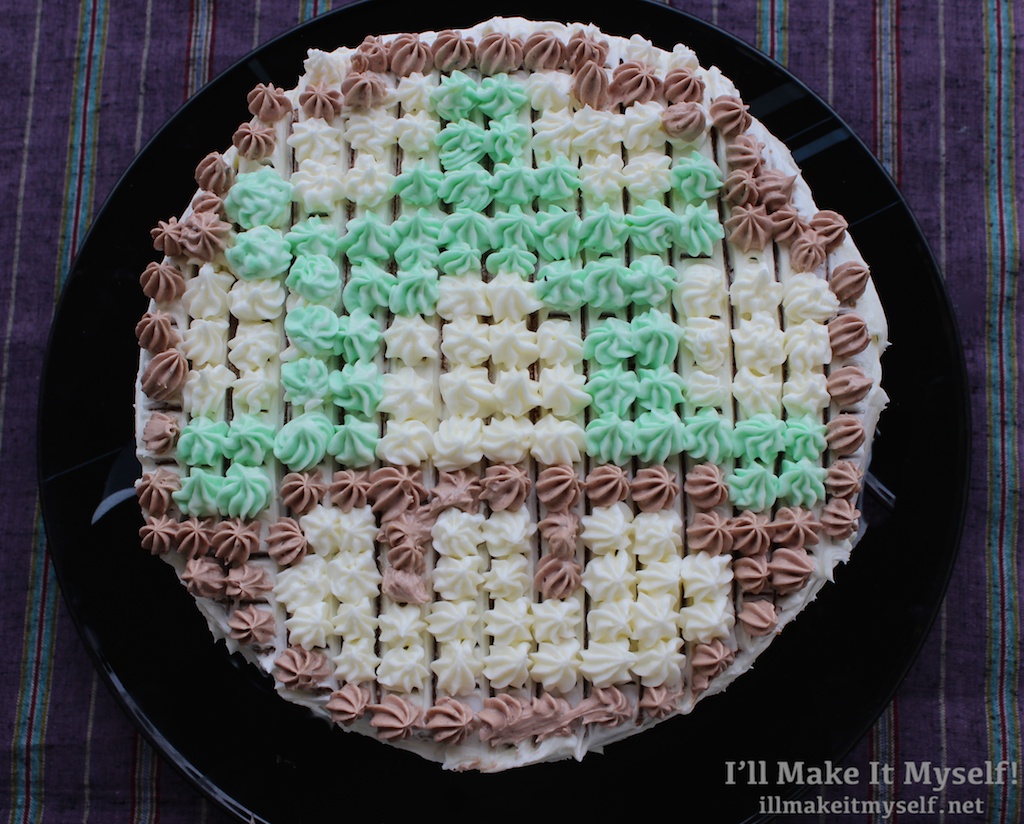
This Nintendo-inspired design is simple to create and works with any round cake–although you won’t want to miss this white-pepper-and-ginger one, which is easily to make in Japan, too.
I’ll Make It Myself!: Ful Medames with Fresh Fava Beans
L.M. (CIR Ishikawa-ken, Anamizu, 2009-11) is the editor of The Ishikawa JET Kitchen: Cooking in Japan Without a Fight. Ze works in international student exchange; writes I’ll Make It Myself!, a blog about food culture in Japan and the US; curates The Rice Cooker Chronicles, a series of essays by JETs and JET alumni on the theme of cooking/eating and being alone in Japan; and admins The JET Alumni Culinary Group on LinkedIn.

Fresh fava beans one of the delights of spring in Japan. Learn how to measure and prepare them in this Japan-friendly recipe!
I’ll Make It Myself!: Add a Dash of Cultural Imperialism: Japanese Food and Cooking (1956), Part 5
L.M. (CIR Ishikawa-ken, Anamizu, 2009-11) is the editor of The Ishikawa JET Kitchen: Cooking in Japan Without a Fight. Ze works in international student exchange; writes I’ll Make It Myself!, a blog about food culture in Japan and the US; curates The Rice Cooker Chronicles, a series of essays by JETs and JET alumni on the theme of cooking/eating and being alone in Japan; and admins The JET Alumni Culinary Group on LinkedIn.
Part 5 on a series about Stuart Griffin’s Japanese Food and Cooking (1956).
If sushi is the engagement, sashimi, or raw fish, is the wedding. Now is the time to stop dabbling an plunge bolding into what may be regarded as the pièce de résistance, in the accepted French sense, and what some may regard as just the piece to resist, other will regard as the one they cannot resist.
Raw fish, to many foreigners, spells trouble.
“Raw fish!” one can hear them scream, “how could anyone think of eating such a thing?” (36)
I’ll Make It Myself!: Add a Dash of Cultural Imperialism: Japanese Food and Cooking (1956), Part 4
L.M. (CIR Ishikawa-ken, Anamizu, 2009-11) is the editor of The Ishikawa JET Kitchen: Cooking in Japan Without a Fight. Ze works in international student exchange; writes I’ll Make It Myself!, a blog about food culture in Japan and the US; curates The Rice Cooker Chronicles, a series of essays by JETs and JET alumni on the theme of cooking/eating and being alone in Japan; and admins The JET Alumni Culinary Group on LinkedIn.
Part 4 on a series about Stuart Griffin’s Japanese Food and Cooking (1956).
We’ve made it to the sushi chapter, readers!
I’ve spoken with several people about Griffin’s choice to describe sushi (well, nigiri sushi) as “rice sandwiches.” While I think most Americans in 2015 have some idea of what sushi is, in the 1950s, outside of Japanese-American communities, some explanation may have been required. Reactions to “rice sandwiches” have ranged from “no, that makes sense” to “aren’t they more like hors d’oeuvres?“* to (my favorite) “Do you know how sandwiches work?”
I’ll Make It Myself!: Recipe: Pear-Almond Cake [Dairy-Free]
L.M. (CIR Ishikawa-ken, Anamizu, 2009-11) is the editor of The Ishikawa JET Kitchen: Cooking in Japan Without a Fight. Ze works in international student exchange; writes I’ll Make It Myself!, a blog about food culture in Japan and the US; curates The Rice Cooker Chronicles, a series of essays by JETs and JET alumni on the theme of cooking/eating and being alone in Japan; and admins The JET Alumni Culinary Group on LinkedIn.
This “cake” occupies a nebulous area somewhere between dessert and cornbread. Almond meal, whole-wheat pastry flour, and cornmeal add a toothsome bite to the soft, sweet pears. I brought this to a potluck as dessert, but I liked it even better when I served it for brunch alongside a frittata and baked oatmeal.
Western pears (yônashi, 洋なし) can be a little tricky to find in certain regions and are not available year-round; the biggest producing regions are Tohoku and Koshinetsu, especially Niigata. Almond flour, whole-wheat pastry flour, corn meal are usually available in the baking section of supermarkets. (See notes for the translated ingredient list.)
I’ll Make It Myself!: Add a Dash of Cultural Imperialism: Japanese Food and Cooking (1956), Part 3
L.M. (CIR Ishikawa-ken, Anamizu, 2009-11) is the editor of The Ishikawa JET Kitchen: Cooking in Japan Without a Fight. Ze works in international student exchange; writes I’ll Make It Myself!, a blog about food culture in Japan and the US; curates The Rice Cooker Chronicles, a series of essays by JETs and JET alumni on the theme of cooking/eating and being alone in Japan; and admins The JET Alumni Culinary Group on LinkedIn.
Part 3 on a series about Stuart Griffin’s Japanese Food and Cooking (1956).
Ch. 2: Rice Dishes
Griffin’s writing style reminds me of culinary gaslighting. He bounces between extolling the deliciousness of Japanese food and calling it gross; he urges his fellow expats (or, rather, their wives) to keep an open mind and expand their palates while simultaneously telling them that foreigners don’t like this food or that food, implying that American cuisine is normal and Japanese cuisine is a curiosity.
I’ll Make It Myself!: Add a Dash of Cultural Imperialism: Japanese Food and Cooking (1956), Part 2
L.M. (CIR Ishikawa-ken, Anamizu, 2009-11) is the editor of The Ishikawa JET Kitchen: Cooking in Japan Without a Fight. Ze works in international student exchange; writes I’ll Make It Myself!, a blog about food culture in Japan and the US; curates The Rice Cooker Chronicles, a series of essays by JETs and JET alumni on the theme of cooking/eating and being alone in Japan; and admins The JET Alumni Culinary Group on LinkedIn.
Part 2 of a series on culinary cultural imperialism in Stuart Griffin’s Japanese Food and Cooking.
Yet, in the fifth paragraph, he goes right back into making the sort of judgments that put people off trying new foods:
Foreigners make wince at the first reading of the following paragraphs, but this a mistake correctable in the eating (1).
While he’s right that trying new foods prepared well is often the way to throw off squeamish assumptions about their perceived foreignness and potential unpleasantness, presenting these types of fish as “this is kinda gross but try it, you’ll like it!” a rather ineffectual way to go about it.
I’ll Make It Myself!: Add a Dash of Cultural Imperialism: Japanese Food and Cooking (1956), Part 1
L.M. (CIR Ishikawa-ken, Anamizu, 2009-11) is the editor of The Ishikawa JET Kitchen: Cooking in Japan Without a Fight. Ze works in international student exchange; writes I’ll Make It Myself!, a blog about food culture in Japan and the US; curates The Rice Cooker Chronicles, a series of essays by JETs and JET alumni on the theme of cooking/eating and being alone in Japan; and admins The JET Alumni Culinary Group on LinkedIn.
My friends, knowing I love food history, gave me a copy of an English-language Japanese cookbook as a parting gift. It’s been quite some time since I’ve written about SCAP (Supreme Commander of the Allied Powers), the US presence in Occupied Japan from 1945-52. In grad school, I wrote about SCAP decrees regarding film, and the micro-management of Japanese media to “promote democracy.” This is a bit of a different look–not a government decree from above but a cookbook created by and for the post-Occupation (1956) expat who wants to make Japanese food at home in Japan. Griffin’s cookbook is a very telling sociological text in that it captures the general colonialist attitudes of the expats toward Japan as an occupied nation and of gender norms (for both Japanese and American women). Additionally, the book provides insight into the introduction of Japanese cuisine to Americans and to the US through its explanations of ingredients and dishes as well as the translations of some of the terms used.
Join me on this multi-part descent into the bowels of cultural imperialism in the kitchen!


